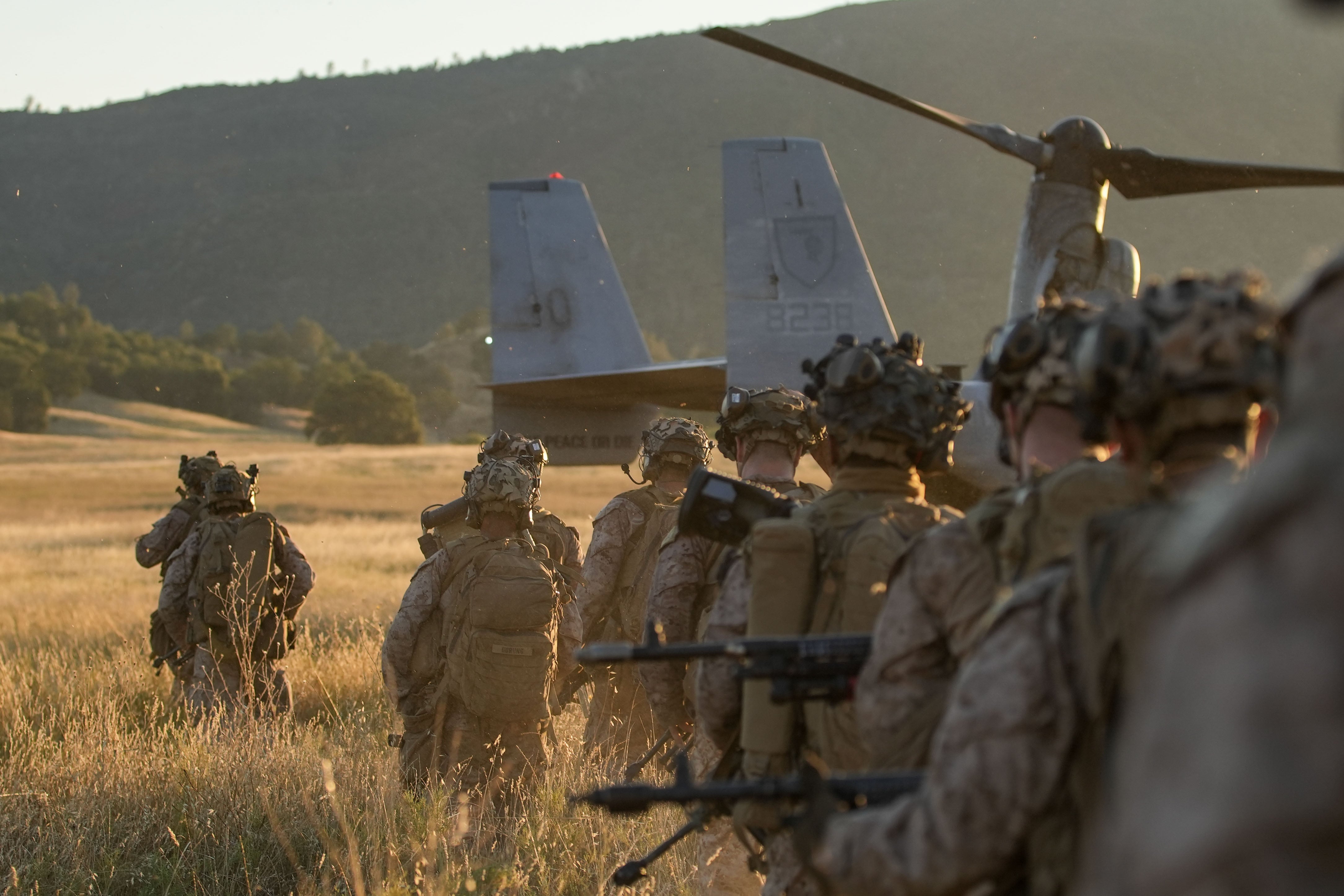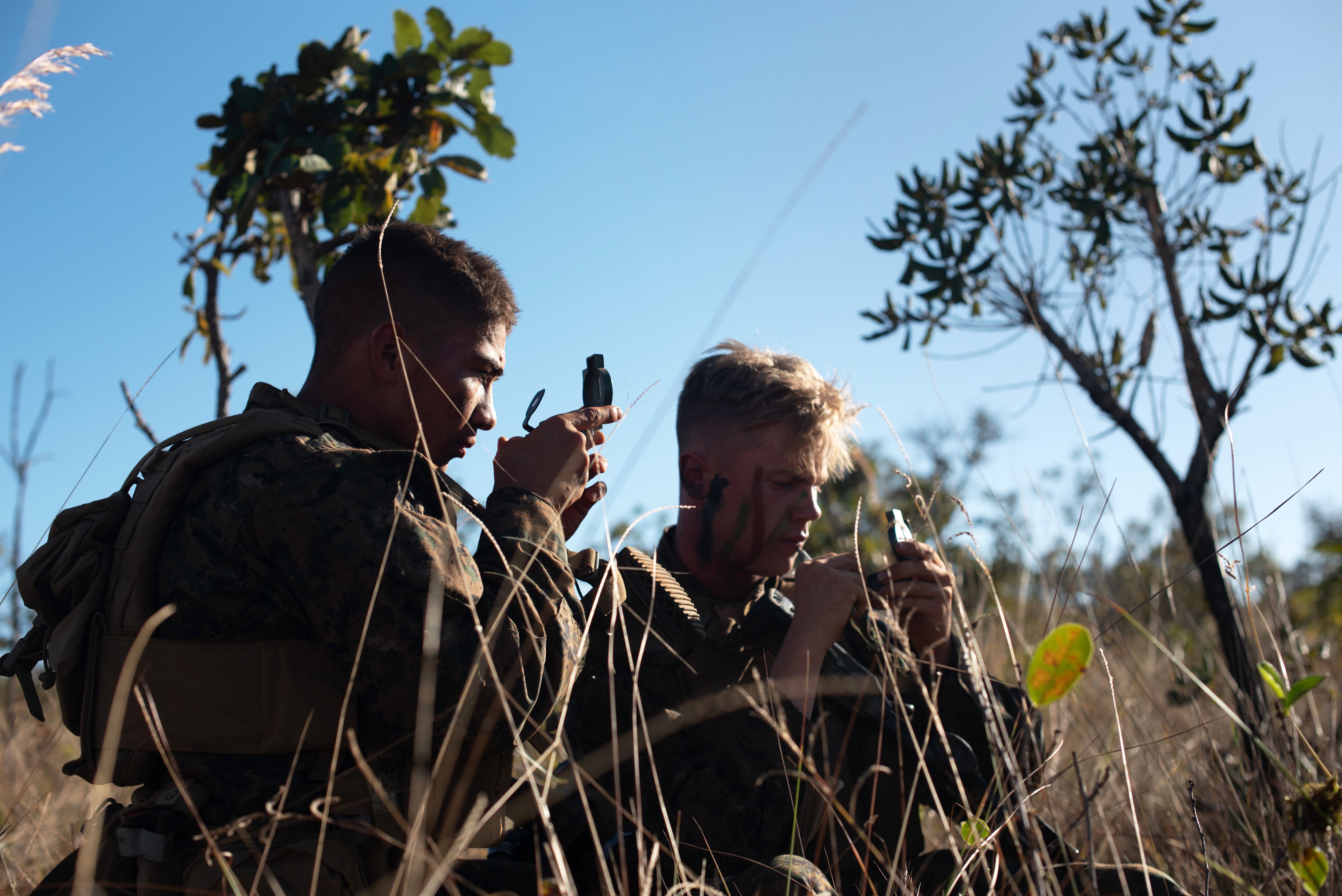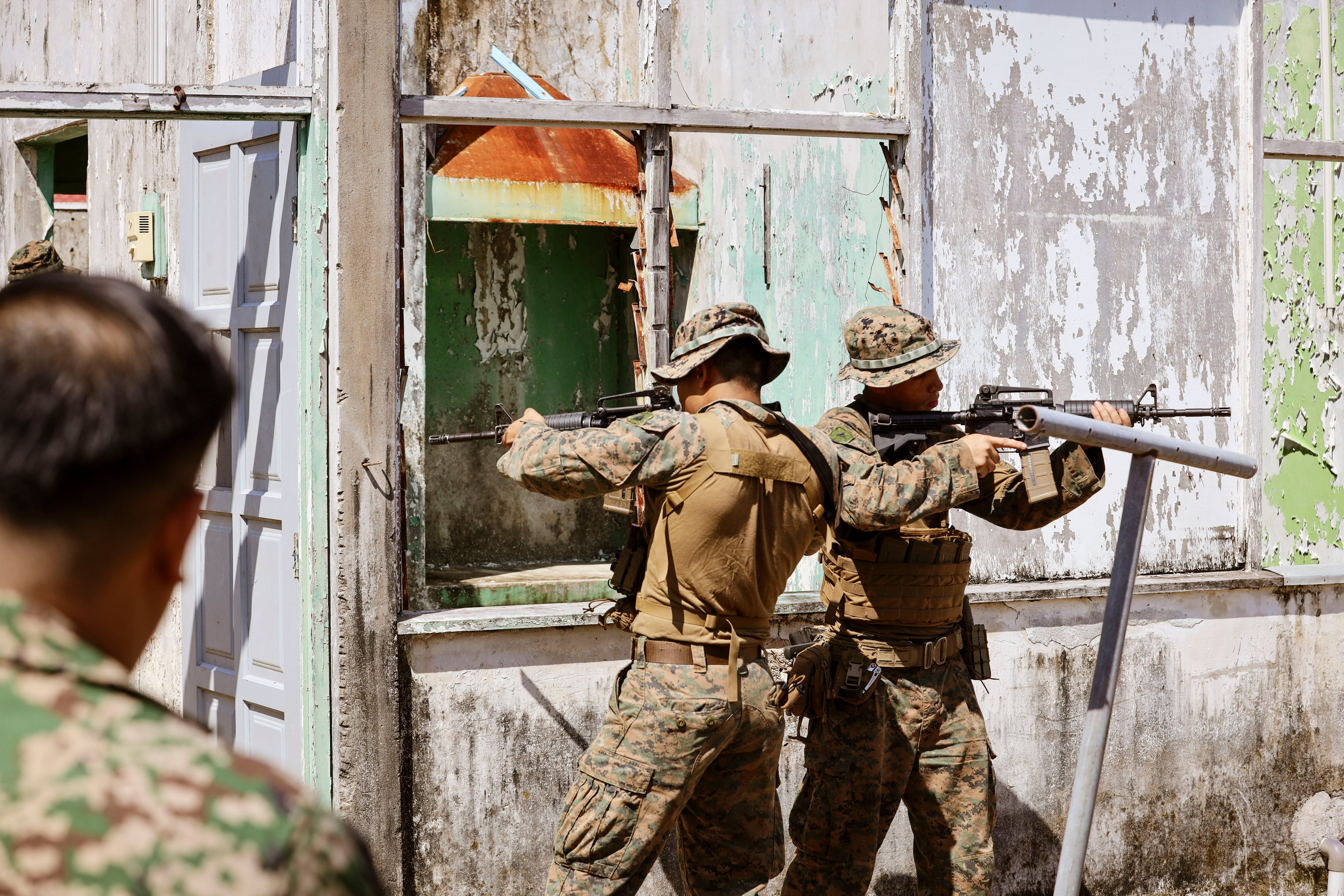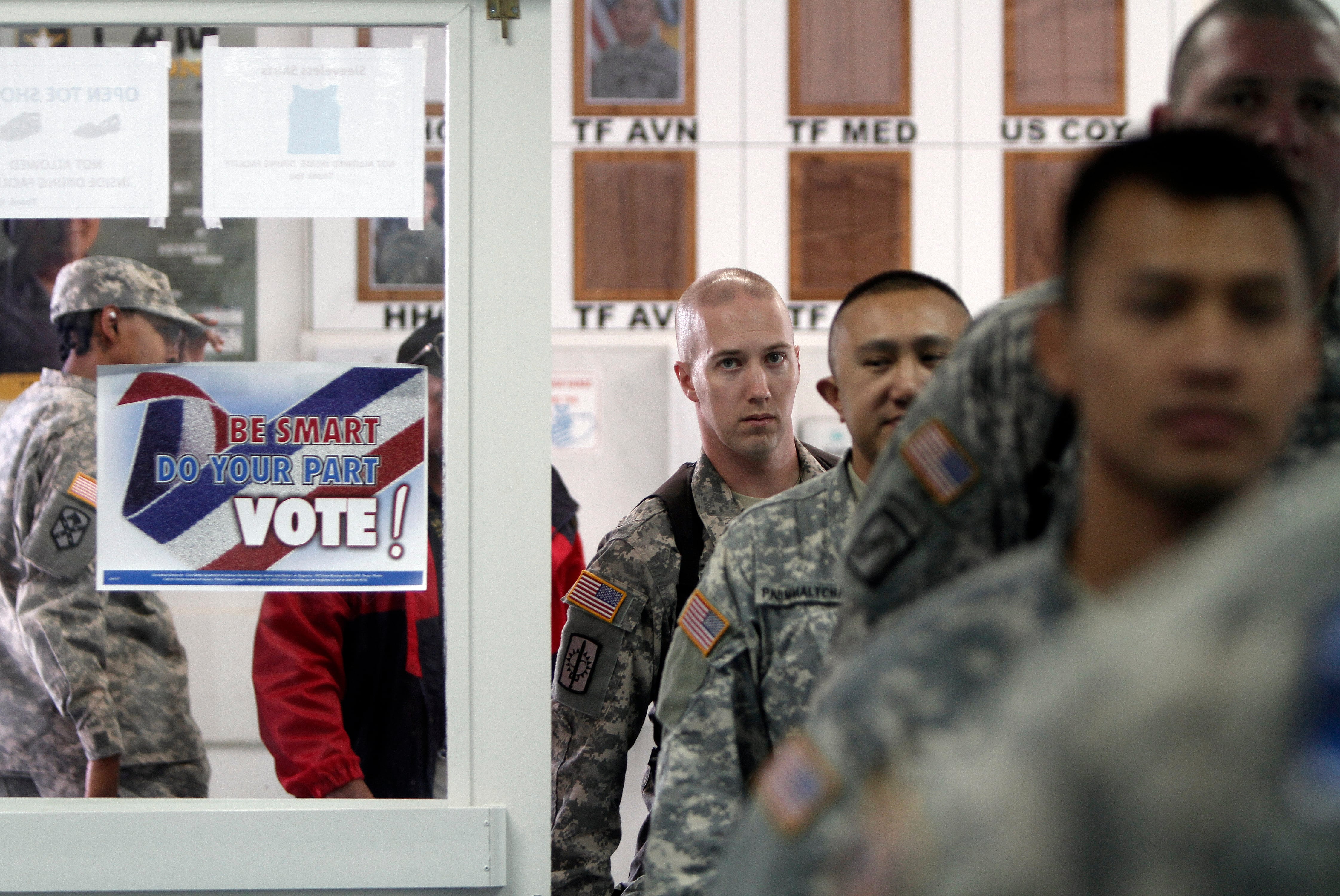Last year, an idea began percolating among some Marine infantry officers: How could they draft principles and procedures for if the Marines found themselves in a conflict similar to the one now raging in Ukraine?
Using open-source analysis and commentary, a team of volunteers led by a retired lieutenant colonel got to work answering this question.
Two documents emerged out of this informal Marine effort.
One was a detailed 126-page handbook that described a series of scenarios and explained how existing Marine doctrine would apply to such a fight.
The handbook covered everything from how a company leader should write an order — one page, handwritten, no imagery — to drone use, and how each drone would support one unit, with leaders tasking drones in the company order.
RELATED
Goodby, tanks: How the Marine Corps will change, and what it will lose, by ditching its armor
It also candidly acknowledged gaps in official Marine Corps guidance on how to hide from enemy drones, how to use anti-tank missiles alongside drones to hunt and destroy the enemy and how to move under artillery fire.
The second document was a brief summary of 10 “lessons for leaders” about fighting on a battlefield like Ukraine.
That five-pager specified what Marine ground forces would need to win in these conditions: drones in every unit and echelon, anti-drone electronic warfare jammers, and, counter to the Corps’ recent decisions on the future shape of the force, a reliance on tanks.
“The tank is not dead, as many have predicted,” the authors wrote, citing Ukraine’s employment of armored vehicles and its desire for more to stand off Russia’s mechanized units.
These documents were combined and published in June on 2ndBn5thMar.com, a website that takes its name from a Camp Pendleton, California, infantry unit, but is unaffiliated with the Corps.
It’s run by Brendan McBreen, who retired as a lieutenant colonel in 2011 and is now a faculty member at Marine Corps Intelligence Schools in Dam Neck, Va.
The site dates to 1998, when McBreen, then attached to 2nd Battalion, 5th Marines, was tasked with distributing standard operating procedures being developed to fight and train. When a sergeant suggested posting the document to the “World Wide Web,” McBreen took it upon himself to create a place to host it.

“I didn’t do anything for a couple of years,” McBreen said. “And my wife said, ‘Hey, we’re still paying $9.95 a month to this web hosting company. And so I got on – you know, once every six months, I would look and see how it’s doing. And there were thousands of downloads.”
For those concerned about operational security, McBreen said all material discussed on his site is based on open-source information and doesn’t cover anything classified.
As McBreen’s career progressed, the site traveled with him. From time to time, fellow infantry Marine officers would reach out to share their own best practices for specific tasks, such as 81mm mortar employment.
While official Marine Corps doctrine provided general guidance, McBreen said he noticed a lack of unit-level practices and procedures, creating space for this crowd-sourced infantry network to fill in the gaps.
“Some of it was good,” McBreen said of the informal input he received. “Some of it was average, but all of it was shareable.”
The emergence of drones as a battlefield factor in recent years has created new demand for guidance on how to integrate the technology into the fight and defend against it. In 2020, Marine Capt. Walker Mills co-authored a paper on how units could camouflage themselves to evade aerial surveillance and published it on McBreen’s website.
Now a drone officer, Mills contributed to portions of the new Ukraine documents dealing with drone warfare that were published on 2ndBn5thMar.com.
“The doctrine always lags somewhat,” Mills told Marine Corps Times. “Our standard infantry company and platoon publications are several years old, maybe even a decade old. So, they don’t talk a ton about small tactical [drones].”
McBreen said he’s occasionally noticed spikes in the site’s popularity over the years, notably around 2005 when he published “Night Warrior,” a training guide for nighttime combat. Most of the time, he said, he can’t tell what’s driving a new surge in traffic.
“The tracking stuff would show jiggle, jiggle, jiggle, jiggle, and then a big spike,” he said, “And you could also tell, although I never knew the origin, that some instructor said at some school, ‘Hey, students, you ought to look at this document.’”

Maj. Zachary Schwartz, who recently served as the operations officer for 3rd Battalion, 7th Marines out of Marine Corps Air Ground Combat Center Twentynine Palms, California, and is now enrolled in Marine Corps Command and Staff college, said he’s used the site for guidance as an infantry leader at various levels.
While a 1st lieutenant serving as a team leader, Schwartz recalled benefitting from an article about condensing traditional Marine Corps five-paragraph orders into concise verbal instructions.
He’s also employed the practical guidance within the camouflage manual to teach signature management and deception: simple things like habitually using leaves and brush to hide the shape of a helmet. Schwartz was also a contributor to the recently published Ukraine document.
It’s hard to know the exact reach of McBreen’s website, which has typically been shared via word of mouth.
“I would say the infantry community embraces what Brendan McBreen has done,” Schwartz said. “The real pros in our community all know this website. They all know the resources on it, and they all pass it around.”
Though the documents contain candid analysis that sometimes challenges conventional Marine Corps perspectives — such as calling for tanks even as the Corps has divested itself of them to fight lighter — the site’s supporters feel that such informal discussions are what leaders want of their Marines.
“I feel like you hear a lot of leaders say, hey, professional discussion is part of being in the Marine Corps,” Mills said. “You know, leave things better than you found them.”
When McBreen published the Ukraine handbook in June, he got an immediate indicator that the document was popular when a notice from the website hosting service warned that downloads had exceeded the site’s capacity and 2ndBn5thMar.com was in danger of crashing.
“OK,” McBreen recalled saying. “I’ll give you four more dollars a month, or whatever you need.”
Hope Hodge Seck is an award-winning investigative and enterprise reporter covering the U.S. military and national defense. The former managing editor of Military.com, her work has also appeared in the Washington Post, Politico Magazine, USA Today and Popular Mechanics.




